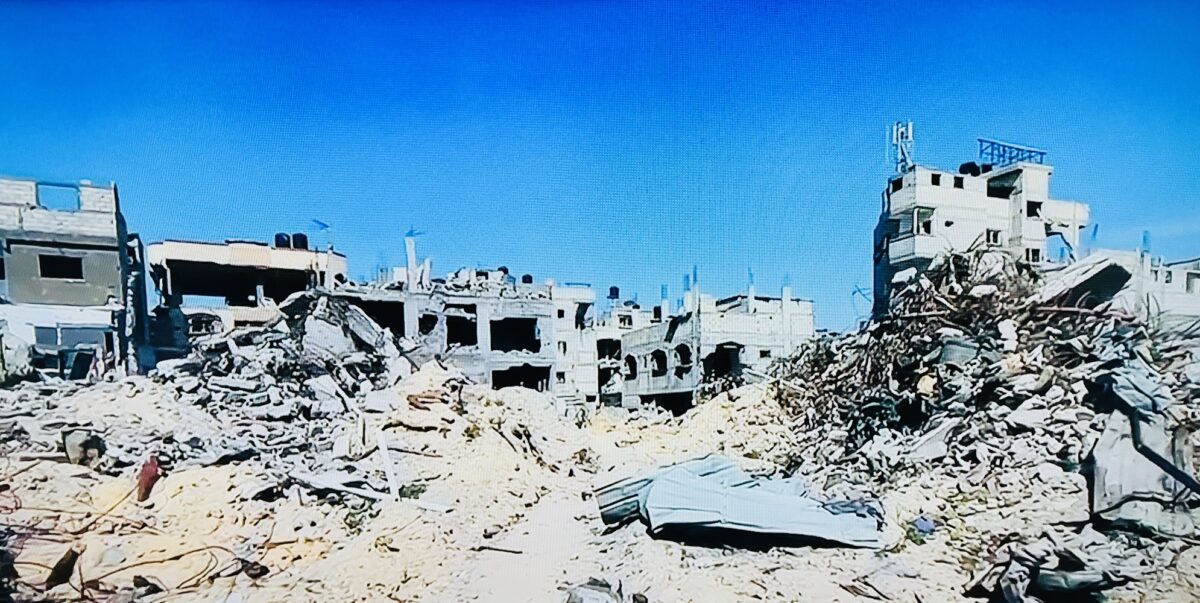Palestinians returning to their homes in the southern Gaza Strip city of Khan Younis, following Israel’s abrupt withdrawal from it on April 7, found a landscape of utter devastation. Much of it was unrecognizable, with some returnees comparing it to cities in Germany that had been pulverized by Allied aircraft raids during World War II.
An Associated Press reporter who witnessed their stunned and grief-stricken reaction wrote, “With thousands of buildings destroyed or damaged, families tried to find their homes along streets bulldozed down to the dirt, surrounded by landscapes of rubble and debris that were once blocks of apartments and businesses. On other blocks, buildings still stood but were gutted shells, scorched and full of holes, with partially shattered upper floors dangling off precipitously.”
A Palestinian physician whose three-storey villa had been reduced to rubble told a New York Times reporter, “I completely collapsed and nearly fainted.”
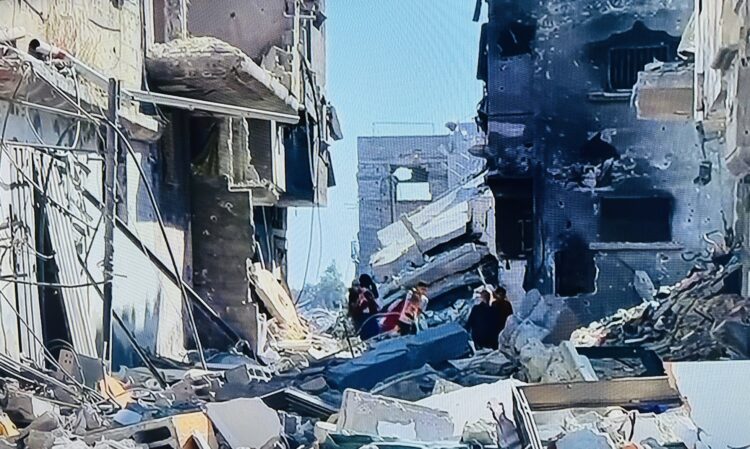
One can commiserate with the human tragedy that has befallen the Palestinians of Gaza. No person should suffer the heartbreak of losing a home. No individual should be reduced to living in a tent because his or her primary residence has been destroyed.
Khan Younis, the birthplace of Hamas leader Yahya Sinwar, was targeted by Israeli forces because it was and still is a Hamas stronghold. During its four-month operation there, Israeli troops discovered that hostages had been held there, uncovered a maze of tunnels, found caches of arms and munitions, located rocket launchers, and killed thousands of Hamas fighters.
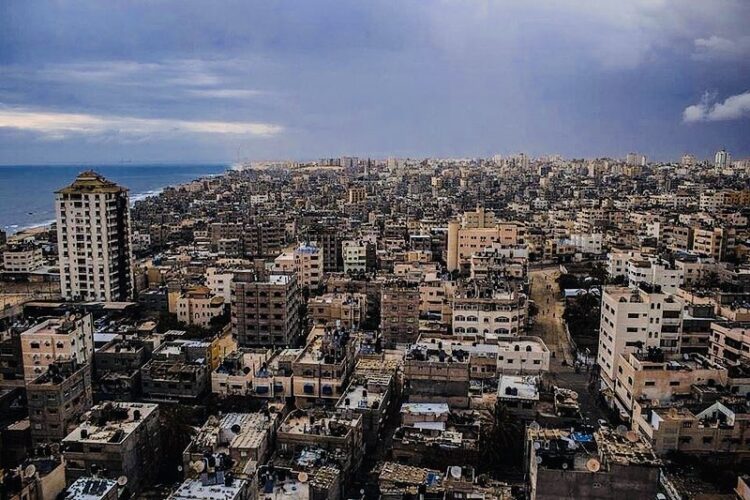
In the process, residential buildings from which they attacked Israeli soldiers were damaged or demolished.
The Hamas leadership, having ruthlessly used civilian infrastructure and civilians as human shields, reaped the whirlwind. Yet Hamas leaders are not solely to blame for the catastrophe that has rendered a significant swath of Khan Younis virtually uninhabitable.
The population at large bears a good part of the responsibility. Palestinian voters in Gaza in 2006 elected Hamas as their governing authority, knowing full well that it was committed to one overarching goal — Israel’s destruction.
From that point onward, Hamas devoted its energies and resources to converting Gaza into an armed camp rather than a thriving statelet. Hamas, backed by Iran, declared war on Israel, which had unilaterally pulled out of Gaza in 2005. Hamas fired barrages of rockets at nearby Israeli towns like Sderot. From 2008 onward, Hamas initiated four cross-border wars with Israel, breaking every ceasefire that had ended each war.
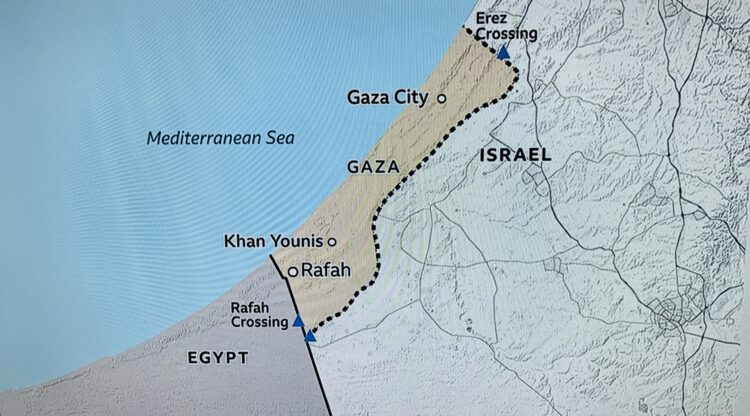
On October 7, Hamas attacked kibbutzim, towns, army bases and a music festival in southern Israel, killing roughly 1,200 Israelis and foreigners and abducting about 250 hostages. During this murderous rampage, Hamas barbarians sexually assaulted and raped numerous women.
Gazans generally greeted these atrocities with outpourings of joy and glee during which candies and sweets were handed out to passersby.
According to surveys taken after the massacre, the majority of Palestinians in Gaza support Hamas. A poll taken by the Palestinian Center for Policy and Survey Research, based in Ramallah, said that 57 percent of respondents in Gaza and 82 percent in the West Bank believe Hamas was correct in launching the October attack. Only 10 percent believed Hamas committed war crimes
It is clear that most Palestinians in Gaza were tacitly complicit in the October 7 massacre, for which Israel and Israelis understandably sought vengeance. From this perspective, the Palestinians are not victims in the fullest sense of the word.
As Israel pulled out of Khan Younis, Palestinians fired six rockets into Israel on April 7 and 8, compared to the five they launched during February and March. The Israeli Air Force conducted airstrikes on the rocket launch sites.
Israel’s withdrawal from Khan Younis was explained as a military realignment by General Herzi Halevi, the chief of staff of the armed forces. “The war in Gaza continues, and we are far from stopping,” he said on April 7 in a reference to what is expected to be an Israeli campaign in Rafah, Hamas’ last urban bastion, to obliterate its four active battalions there.
On the heels of his comment, Defence Minister Yoav Gallant said that Israel is preparing for “follow-up missions” in “the Rafah area.” As he put it, “We will reach a point when Hamas no longer controls the Gaza Strip and does not function as a military framework that poses a threat to the citizens of the state of Israel.”
Two days ago, Prime Minister Benjamin Netanyahu said that a date has been set for the Rafah operation. “That will happen,” he said without disclosing the precise time. However, Gallant told U.S. Secretary of Defence Lloyd Austin on April 8 that Israel has not set a date for a major ground offensive in Rafah.
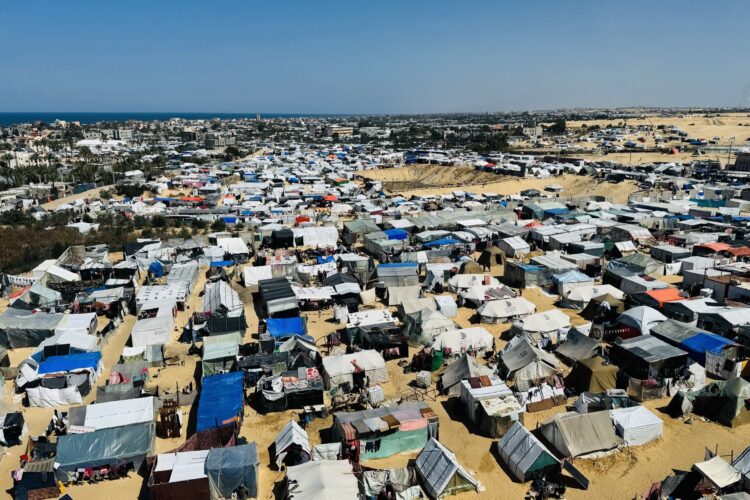
Whatever the case, the Israeli broadcaster Channel 13 TV claims that Israel will begin evacuating Rafah of its civilian population within one week, and that the evacuation could take several months. It remains to be seen whether the United States, Israel’s chief ally, will go along with this plan.
In the meantime, Israel’s troop presence in Gaza is down to one of the lowest levels since last October. By all accounts, a single brigade, with upwards of 5,000 troops, is left in Gaza, down from the 50,000 level at the height of the war in December and January. This brigade is charged with two major tasks — guarding a narrow buffer zone along the border and a corridor that splits Gaza in half.
Presumably, Israel will resort to surgical strikes in waging future operations against Hamas and its sister organization, Islamic Jihad.
These targeted operations may well affect civilians to some degree, but as long as Hamas remains undefeated and unbowed, Israel will have no choice but to pursue it relentlessly, putting every village, town and city in Gaza at risk.
